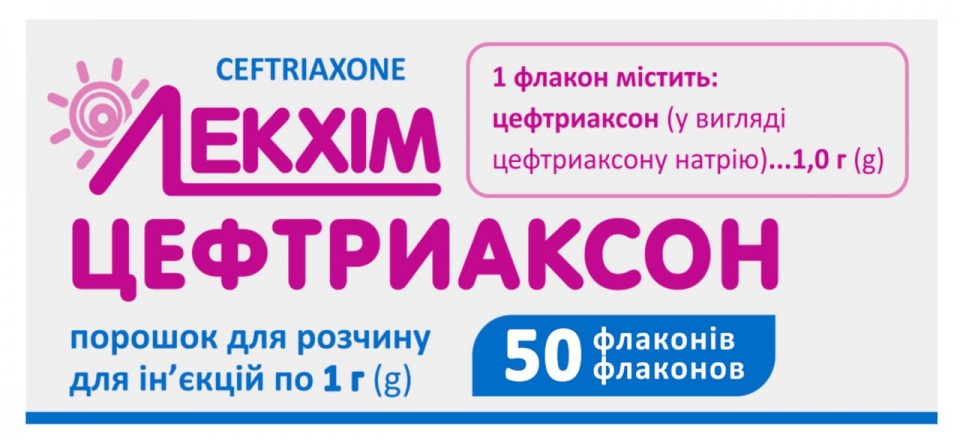
Ceftriaxone
General properties
Infections caused by ceftriaxone-susceptible bacteria:
- respiratory tract infections, especially pneumonia, and ear, throat and nose infections;
- intra-abdominal infections (peritonitis, biliary tract and gastrointestinal tract infections);
- kidney and urinary tract infections;
- genital infections, including gonorrhea;
- sepsis;
- infections of bones, joints, soft tissues, skin, and wound infections;
- infections in patients with a weak immune system;
- meningitis;
- disseminated Lyme borreliosis (stages 2 and 3).
Preoperative prophylaxis of infections during the surgical interventions in the gastrointestinal tract, biliary tract, urinary tract and during the gynecological procedures, but only in cases of potential or known contamination.
When administering Ceftriaxone, it is necessary to adhere to official recommendations for antibiotic therapy and, in particular, recommendations for the prevention of antibiotic resistance.
Hypersensitivity to ceftriaxone or any other cephalosporin. History of severe hypersensitivity reactions (for example, anaphylactic reactions) to any other type of beta-lactam antibacterial agents (penicillins, monobactams, and carbapenems).
Ceftriaxone is contraindicated:
Hypersensitivity to ceftriaxone or other cephalosporins. History of severe hypersensitivity reactions (for example, anaphylactic reactions) to aother type of beta-lactam antibacterials (penicillins, monobactams, and carbapenems).
Ceftriaxone is contraindicated for:
- premature newborns aged ≤41 weeks, taking into account the period of intrauterine development (gestational age + postnatal age)*;
- full-term newborns (aged ≤28 days):
- newborns with hyperbilirubinemia, jaundice, hypoalbuminemia or acidosis as in these cases the bilirubin binding may be impaired*;
- newborns who need (or are expected to be in need of) intravenous administration of calcium preparations or infusions of calcium-containing solutions as there is a risk of precipitates of the calcium salt of ceftriaxone (see the sections “Specific use” and “Side effects”).
* In vitro studies have shown that ceftriaxone can displace bilirubin from serum albumin binding that can lead to the development of bilirubin encephalopathy in such patients.
Before intramuscular administration of ceftriaxone, it is necessary to exclude contraindications for the use of lidocaine, if used as a solvent (see the section “Specific use”). See instructions for medical use of lidocaine, especially contraindications.
Ceftriaxone solutions containing lidocaine should never be intravenously administered.
Pharmaceutical characteristics
White or slightly yellowish crystalline powder.
No special storage conditions are required. Keep out of reach of children.
